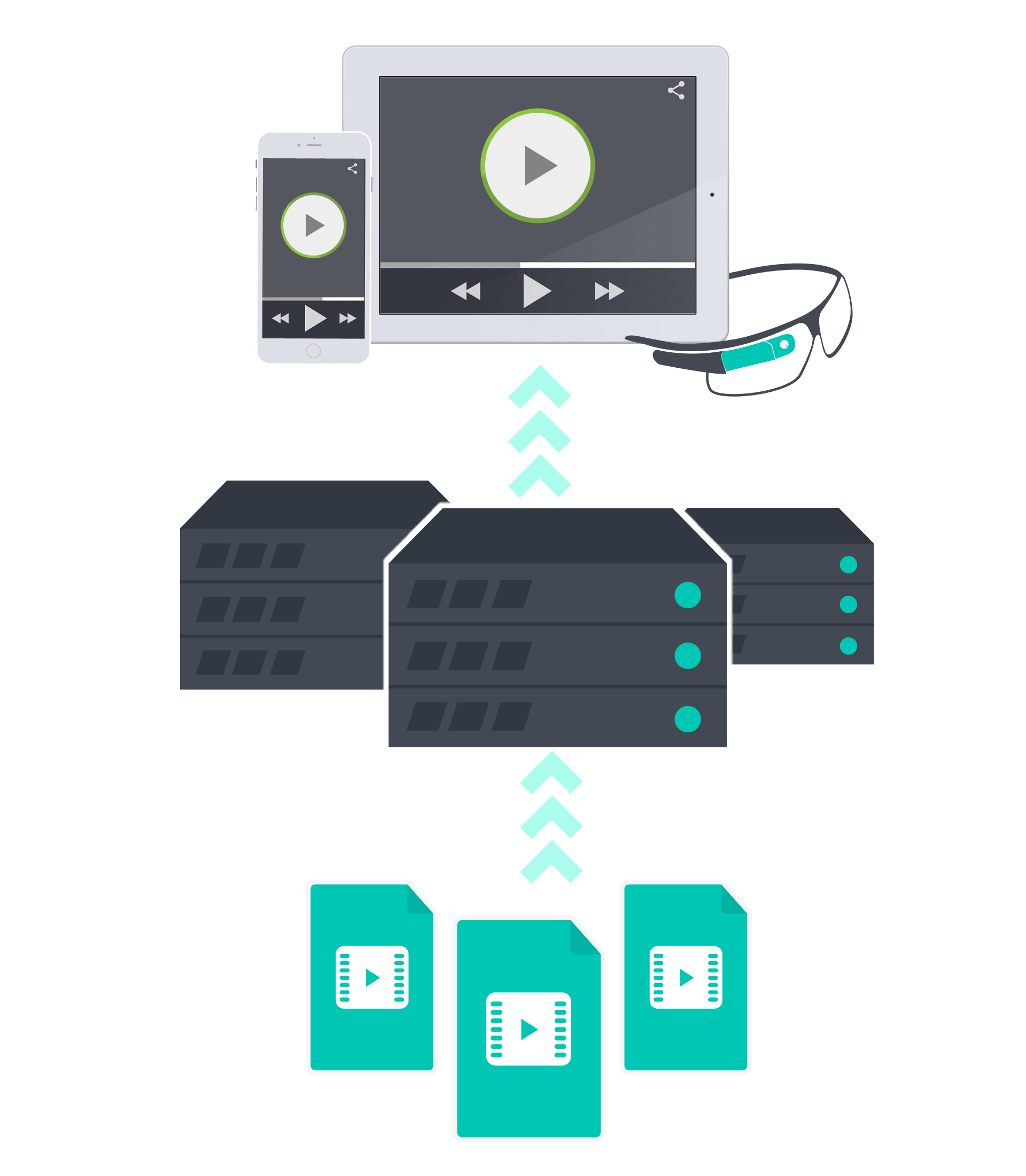Why CDNs Are Critical To OTT Success
Although we can access websites around the world from any location, distance matters - especially when it comes to video streaming. Rather than a company’s physical location, we now need to consider the location of the servers.
Why is a CDN Critical to the Success of My OTT Strategy?
Geographical distance due to a limited number of streaming servers is the biggest cause of slow content delivery, whether that’s slow loading, excessive lag time, or frequent buffering. A user in Florida can quickly access web content from a server in Georgia. But a user in Tokyo or even San Francisco would have to wait much longer to view that content, and at times of high traffic it’s almost guaranteed to be at a lower quality.
That’s where CDNs come in. And when it comes to CDNs, an old principle is often true: bigger is better.
What is a CDN and How Does It Work?
A CDN or content delivery network is a system that helps your OTT content reach your audience in the most efficient way possible. You can use a CDN to access content across multiple platforms including cable boxes, web browsers, mobile phones, tablets, and gaming consoles.
The “network” part of a CDN consists of hundreds to thousands of servers housed in data centers around the world. A very basic, entry-level CDN should have over 1000 servers in at least 10 data centers in any given country. More servers and data centers in a network ensure that visitors in more locations can access your content without issue.
Traffic from around the world can overload a single server easily. Instead, a global network spreads your traffic evenly across multiple servers. With this system in place, your website, mobile apps and OTT platforms have a very low chance of struggling with heavy traffic.
Caching Content
Caching is another key component of any CDN. A cache is temporary storage of your website’s data. Typically a CDN will only cache static data, like web pages, articles, and videos, but today it’s also possible to cache dynamic (or frequently changing) components of a website, like user comments or individual shopping carts, or past video viewing history on an e-commerce site/paywall. To remain accurate, cached data is periodically purged and replaced with updated data.
So why does a cache matter? Because caching allows users to access static content on your website almost instantly. There’s no need to wait for a page to load because the information has already been pulled up.
Server Locations
Because geographic location impacts speed, using a wide network of CDNs is far more powerful than relying on traditional web hosting companies. While any decent hosting company will have multiple servers around the world, a CDN can offer far more options and guarantee optimal performance.
Traditional hosts balance the needs of several websites and limit resources accordingly. But with websites becoming larger and more complex, standard hosting services can’t always keep up. Choosing a CDN specifically for your website will ensure your content loads smoothly no matter what. In a nutshell, a CDN can:
- Improve customer experience
- Reduce or nearly eliminate latency
- Maintain almost 100% uptime
- Adapt and manage unpredictable traffic
Improve Customer Experience
The end goal of a CDN is to better serve your customer. Your customers may never be aware of your CDN but they’ll see the results. When it comes to OTT strategy, CDNs can provide a smooth, seamless experience.
Today’s viewers have no patience for slow loading or continually buffering videos. They can easily turn elsewhere for content that doesn’t require a wait. Slow-to-load video content creates frustrated visitors. Established customers may be more patient with your site or app, but new visitors might not give you a second chance.
With cached content and nearby servers, you can ensure that your video content loads quickly for users across the globe. On the user end, visitors will be pleased to find that they can access location-specific content without a sacrifice in speed or quality. For example, users accessing East Coast content across a CDN don’t need to go through an East Coast server if they’re in the LA. Instead, the content is directed to their local server in Santa Monica, Hollywood or Long Beach, also known as an edge server, and so video plays at the same or faster speed than accessing a server in Atlanta or Boston.
Eliminate Buffering
When a user accesses your media, the nearest server that hosts your site must transmit the data requested to the user, whether that’s a video, audio or captions. When that data takes too long to reach the platform where it was requested, the players which play back your content on websites and inside mobile apps and TV apps, will start to buffer as they wait on the content from the streaming server, displaying a loading indicator - sometimes jokingly referred to as the "spinning wheel of death".
The biggest cause for buffering is the physical distance between the viewer and the transmitting server. While your origin server will always provide the best service to those in nearby regions, connecting to multiple servers with a CDN closes the viewer-to-server gap. The more extensive your CDN, the less buffering on the players on websites and apps.
100% Up time
Along with loading time, uptime can be a major concern, especially in the realm of video content. Video requires a higher quality connection than images or plain text. But a high-performing CDN can ensure nearly 100 percent uptime even for video.
For high uptime, you need redundancies. Content providers no longer rely on a single server or even a single server per region. Instead, they recognize the need for multiple data centers with multiple servers to keep uptime as high as possible.
Manage Unpredictable Traffic
As companies experience rapid growth and increased viewership, CDNs keep video content online and easily accessible. It may be difficult to predict when traffic will increase and by how much. Or you may work within an industry with regular high-traffic periods that correspond to seasons or holidays. The good news is that CDNs keep your site scalable so you’re ready for any type of high volume period.
Having access to thousands of servers across the globe allows for traffic offloading, which keeps your main server from experiencing traffic spikes. Instead, visitors will be automatically spread across multiple servers.
Traffic is also tricky to manage during live content. Live streams are meant to bring in high volumes during a dedicated time. Visitor traffic is not only higher than usual but unpredictable, as users arrive late or tune in and out during your stream.
For live content, there are Live CDN options. Since live video can’t be cached as it occurs, a high-quality live stream depends on the content being delivered from the nearest data center, not across the country or the globe. A robust CDN will help keep this process smooth, no matter how many viewers you have in a live stream or how frequently they come and go during the stream.
At Lightcast.com, we use the best CDNs around the world for our clients. With 250,000 streaming servers in 110 data centers around the world, OTT content hosted through Lightcast.com can provide the highest possible uptime and best loading performance in the market. For more information on using CDNs for your company, contact us today.














